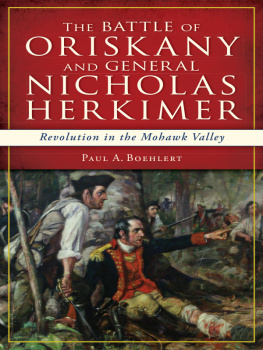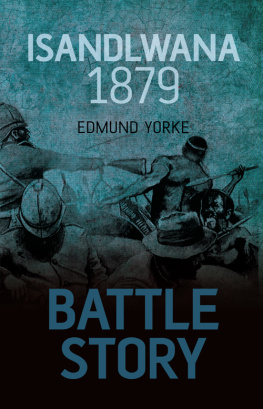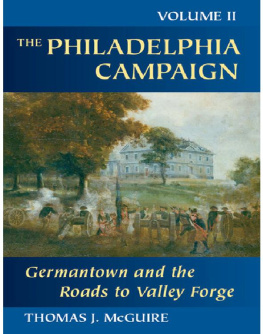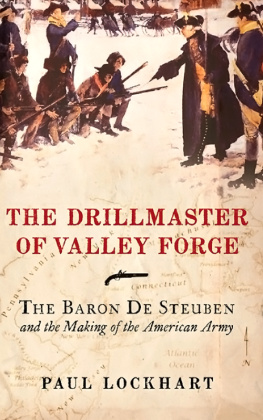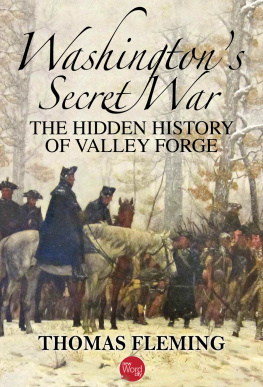

Published by The History Press
Charleston, SC 29403
www.historypress.net
Copyright 2013 by Paul A. Boehlert
All rights reserved
Front cover: General Herkimer at Oriskany, oil on canvas, F.C. Yohn. Courtesy Utica Public Library.
First published 2013
e-book edition 2013
ISBN 978.1.62584.700.3
Library of Congress Cataloging-in-Publication Data
Boelhert, Paul A.
The Battle of Oriskany and General Nicholas Herkimer : revolution in the Mohawk Valley / Paul A. Boelhert.
pages cm
Includes bibliographical references and index.
print edition ISBN 978-1-62619-224-9
1. Oriskany, Battle of, N.Y., 1777. 2. Herkimer, Nicholas, 1728-1777. 3. New York (State)--History--Revolution, 1775-1783--Biography. 4. United States--History--Revolution, 1775-1783--Biography. I. Title.
E241.O6B64 2013
973.333--dc23
2013040730
Notice: The information in this book is true and complete to the best of our knowledge. It is offered without guarantee on the part of the author or The History Press. The author and The History Press disclaim all liability in connection with the use of this book.
All rights reserved. No part of this book may be reproduced or transmitted in any form whatsoever without prior written permission from the publisher except in the case of brief quotations embodied in critical articles and reviews.
For my mother, who passed away as this book was being written.
CONTENTS
ACKNOWLEDGEMENTS
An ancient philosopher once said, Those whom the gods would destroy, they first sign to book deals. In the fraught and overloaded (but still delightful) process of producing the small volume you hold in your hand, the following people have been instrumental.
My editor at The History Press, Whitney Tarella Landis, championed this offbeat project before the editorial board and since its inception has engaged in a finely nuanced combination of hand-holding and bum-kicking to ensure that I complete it on time. A never-failing source of information, guide, mentor and sounding board, she has been nothing short of marvelous throughout.
Greg Smith, director Audrey Nieson and the entire staff of the New York State Office of Parks, Recreation and Historic Sites (Peebles Island) deserve far more thanks than I could ever give for their cordiality, generosity and genuine desire to see another resource added to the established body of knowledge about Oriskany and Herkimer. Any errors or inaccuracies in this book are mine alone.
Brian Howard, his staff and the volunteers at the Oneida County Historical Society opened their archives and shared numerous resources, images, maps and stories that have enriched this work immensely. They all belong to that special breed of people whose eyes sparkle when the chance is offered to assist in a work they believe in.
The rangers of the National Park Service who assist in staffing the Oriskany Battlefield and Fort Stanwix sites are uniformly dedicated to making the places and events that they interpret come to life. Theyre darn good storytellers, too.
The director of the Utica Public Library, Darby OBrien, unhesitatingly shared her treasure, the F.C. Yohn painting that appears on the cover. Her generosity and openness set the tone for this entire project, which has been a joyful and upbeat one.
Special thanks are due to my cousins Cece Goodelle, Peggy Barry and Kathy Colling. In busy, emotionally trying times they shouldered more than their share of family duties and responsibilities so that I could go home and work on the book.
And most of all, to Adrian Miller, without whom this book would not exist. My heartfelt thanks to you all.
INTRODUCTION
This book was begun, I suppose, when I was seven years old.
Outside the Dunham Public Library in my hometown of Whitesboro, New York, stands a granite marker about four feet tall. One morning on the way to school, I stopped and read the weathered bronze plaque on its face:
The Rear Guard of General Herkimers Army Encamped Along the Highway Near This Spot on August 5th, 1777, the Night Before the Battle of Oriskany.
There was a map, too, showing the Tryon County Militias line of march from the Herkimer Homestead in Little Falls to the battle site and on to its intended destination at Fort Stanwix in Rome. The little boy who stood reading this plaque hadnt yet heard about the battle, but I knew that Oriskany was only a few miles up the road. My dad even worked there, at the county airport.
And whatever had happened up there was important enough that, way back in 1912, the Fort Schuyler Chapter of the Sons of the Revolution had caused a big block of granite to be carved, a plaque to be cast and bolted on and the finished marker placed next to the sidewalk. All this just so a seven-year-old boy could learn that part of an army had camped a few feet from what would someday be Mrs. Dunhams house on Main Street. In later years, I would discover that my marker was just one of fourteen dotted all along the militias route. I hope many young girls and boys have read them in the century since they were placed and had their imaginations fired as mine was.

Route marker at Dunham Public Library, Whitesboro. Author photo.
Ever since then, Ive had an abiding interest in the events of that miserably hot first week of August 1777. But beyond the ambush in the gloomy ravine and the shocking butchers bill the fighting produced on both sides, the salient feature of the Battle of Oriskany, for me, is the man whose name is cast so prominently on that weathered bronze plaque: General Nicholas Herkimer.
Herkimer was different in so many ways from other leading lights of the Revolution; he was no aristocratic intellectual like Thomas Jefferson or Dr. Joseph Warren, who once addressed a Boston meeting of the Sons of Liberty dressed in a Roman toga. He was neither a revolutionary firebrand like Samuel Adams nor a philosopher of law and government like Sams cousin John. He wasnt of English descent and didnt regard England as his mother country. In fact, in many ways, Herkimer and his family were more akin to the waves of European immigrants who would land at Ellis Island a century hence than to the Dutch patroons or English shopkeepers who were his contemporaries.
Yet when called upon, Herkimer mustered a few hundred men of the Tryon County Militia, half-trained citizen soldiers and his own neighbors, and led them in a desperate attempt to delay a superior enemy force that would have driven a wedge between New England and the rest of the colonies. Despite rashness and tactical errors on Herkimers part, his men and their Oneida allies fought the enemy to a standstill and halted his advance. In so doing, Herkimer himself gave the last, full measure, suffering a wound that would prove mortal a few days later.
What makes a man do these things? Why would a wealthy planter and trader of German descent who was not a professional soldier fight for the independence of his adopted land and the freedom of its people? It would have been so easy to regard the conflict between the colonies and Britain as someone elses problem, yet he championed the Revolution and gave it everything he held precious, ultimately including his blood. What was it about America that made it worth Herkimers life?
Next page
